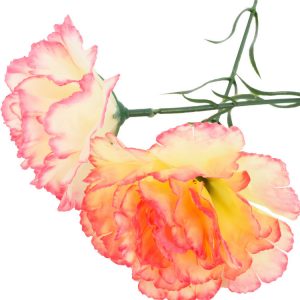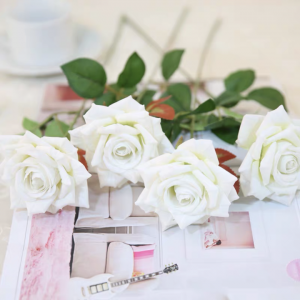Creating captivating tablescapes with artificial flower centerpieces is a wonderful way to enhance the aesthetics of various events and settings. Whether you’re planning a formal dinner, a wedding reception, a holiday celebration, or simply want to beautify your dining table, here are some tips to help you design stunning artificial flower centerpieces that will leave a lasting impression:
- Theme and Mood: Determine the theme and mood of your event. Whether it’s romantic, rustic, modern, vintage, or festive, your centerpiece should align with the overall ambiance you want to create.
- Choose the Right Container: Select a container that complements the theme and style of your event. Options include vases, jars, lanterns, wooden boxes, and even unconventional items like vintage books or antique pitchers.
- Color Palette: Choose a cohesive color palette that coordinates with the table linens, decor, and the overall theme. Harmonious colors will create a visually pleasing and unified look.
- Flower Selection: Opt for artificial flowers that match the season and theme of your event. Choose high-quality blooms that resemble real flowers closely in terms of color and texture.
- Mix and Match: Combine different types of artificial flowers to add texture and variety to your centerpiece. Mix in various sizes and shapes to create visual interest.
- Greenery and Foliage: Incorporate artificial greenery and foliage to enhance the arrangement’s natural appearance and provide a lush backdrop for the flowers.
- Height Variation: Create depth by varying the heights of your flowers within the arrangement. Use taller flowers in the center and gradually decrease the height towards the edges.
- Layering: Build your centerpiece in layers, starting with a base of greenery, followed by larger focal flowers, and then smaller filler blooms or accent elements.
- Add Accents: Enhance your centerpiece with decorative accents like candles, ribbon bows, pearls, crystals, or other thematic embellishments.
- Table Size and Shape: Consider the size and shape of your table when designing the centerpiece. A long rectangular table might require a larger centerpiece, while a round table may benefit from a more compact arrangement.
- Balance and Symmetry: Create a balanced arrangement that feels visually appealing. Symmetry can lend a formal and traditional look, while asymmetry adds a modern and artistic touch.
- Personalization: Infuse your centerpiece with personal touches that reflect the occasion or your unique style. This could include photographs, handwritten place cards, or meaningful objects.
- Lighting Effects: Integrate ambient lighting, such as candles or string lights, to add warmth and a magical ambiance to your centerpiece.
- Tableware Coordination: Ensure that your centerpiece complements the tableware, including dishes, glasses, and cutlery, to create a harmonious and complete look.
- Adapt to Seasons: Swap out elements of your centerpiece to suit different seasons and occasions. This allows you to create fresh and relevant looks throughout the year.
By following these tips and infusing your own creativity, you can design artificial flower centerpieces that captivate and enhance any table setting, making your events and gatherings truly special and memorable.
























